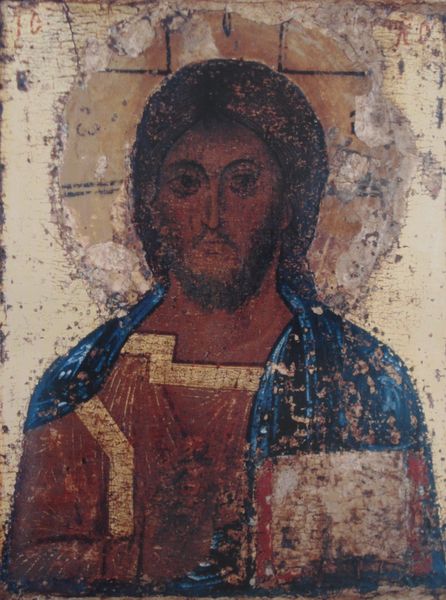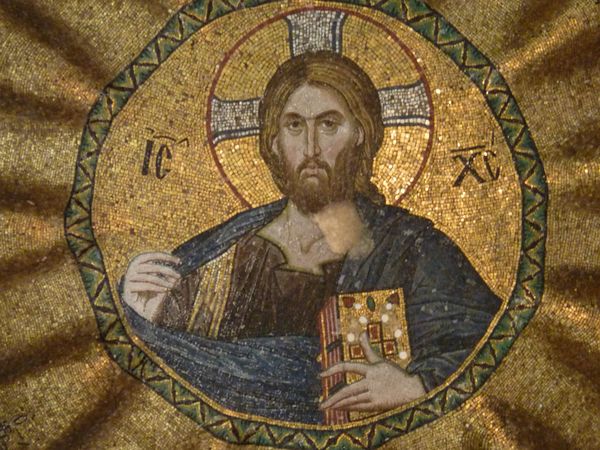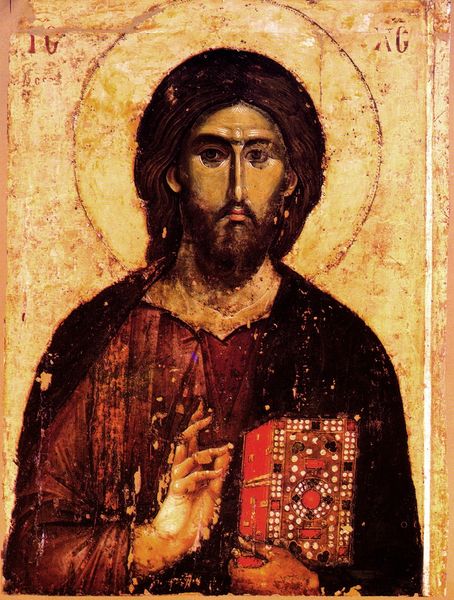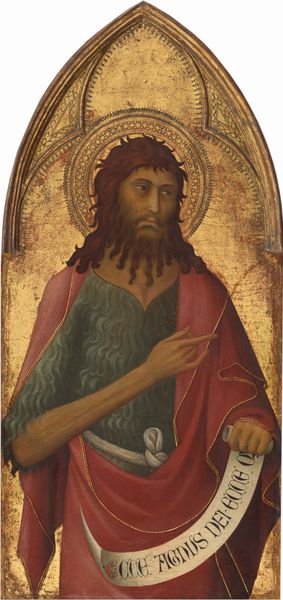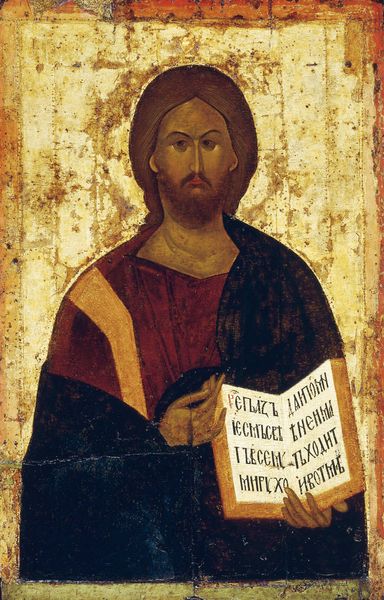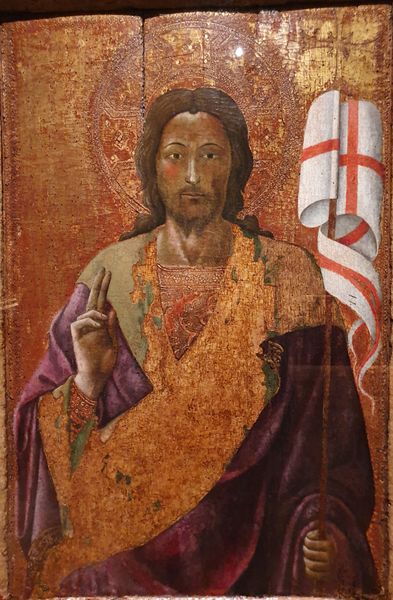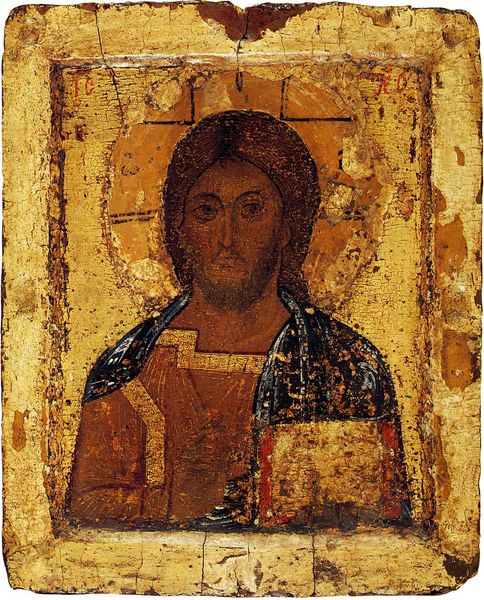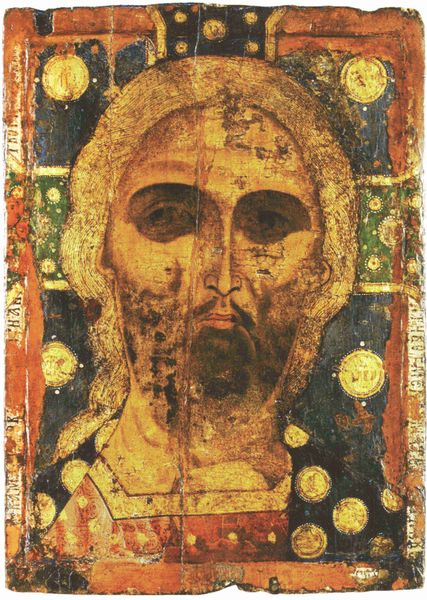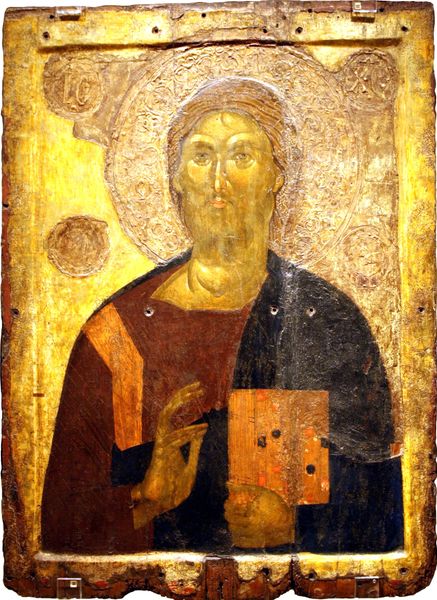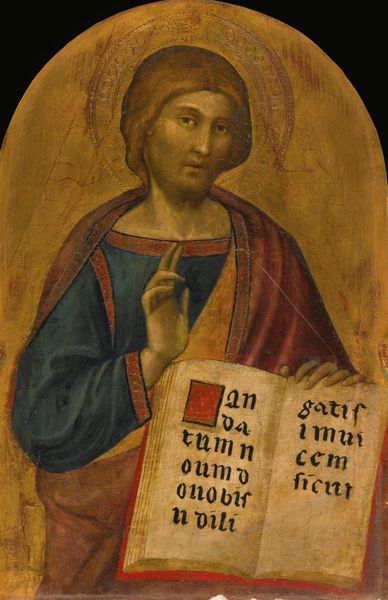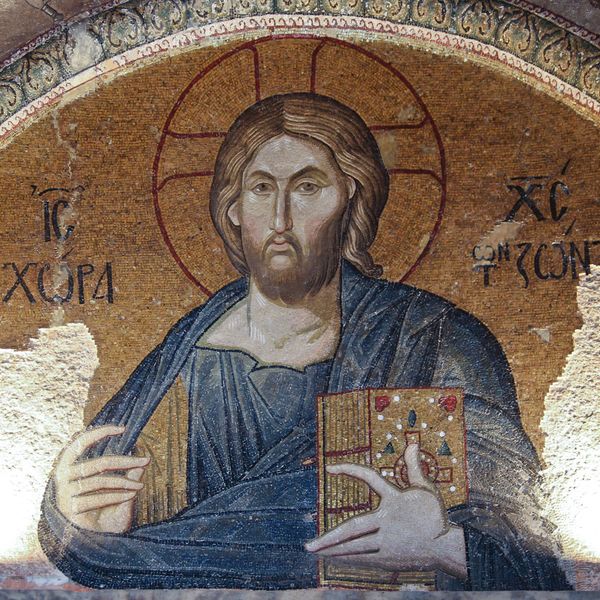
mosaic, gold
#
portrait
#
mosaic
#
byzantine-art
#
medieval
#
gold
#
figuration
#
history-painting
Copyright: Orthodox Icons,Fair Use
Curator: The mosaic we're viewing is titled "Christ the Merciful." Created around 1150, this Byzantine artwork resides at the Bode Museum in Berlin. Editor: It's quite striking. The piercing gaze, the way the gold catches the light...there’s a captivating serenity amidst what must have been painstaking construction with tiny tesserae. Curator: Indeed. And consider its context: The Byzantine era was heavily shaped by religious doctrine influencing social and political life. How might an image like this function to solidify faith and imperial power? The very depiction of Christ—his gentle yet knowing expression, the book of law he carries—presents an image of divine authority made tangible. Editor: You raise fascinating points about the image's power dynamics, but what grabs me is the materiality. The varied angles of the mosaic fragments would reflect light differently depending on the viewer’s position. Do you think the artist was consciously playing with viewer perception and manipulating the formal elements to convey complex religious messages? Curator: Absolutely. The golden halo, for instance, isn't just a symbol of divinity, it's also a construction. Its visual impact draws us in and reinforces the theological narrative in which Christ stands central. The social and historical context provided specific requirements, artistic skills and technological innovation served to deliver such complex visual messages. The figure also speaks of theological schisms around Christ's nature; human or divine. Editor: The book itself seems highly stylized—ornate geometric patterns. The binding suggests a valuable codex. The intricate details feel symbolically charged. It might suggest divine wisdom and earthly authority working in conjunction, using complex aesthetic and geometric construction. Curator: Precisely! The way that sacred knowledge gets materialized into this Byzantine form allows a reading where spirituality is embedded within the tangible, in political and social discourse as well. Editor: Ultimately, what started as a sensory experience, an appreciation for this iconic portrait's glow, transformed into complex layers of interpretation and insight. Curator: Right, revealing how an artwork reflects social power and beliefs of its time and challenges viewers in every era, depending on who is looking and why.
Comments
No comments
Be the first to comment and join the conversation on the ultimate creative platform.

